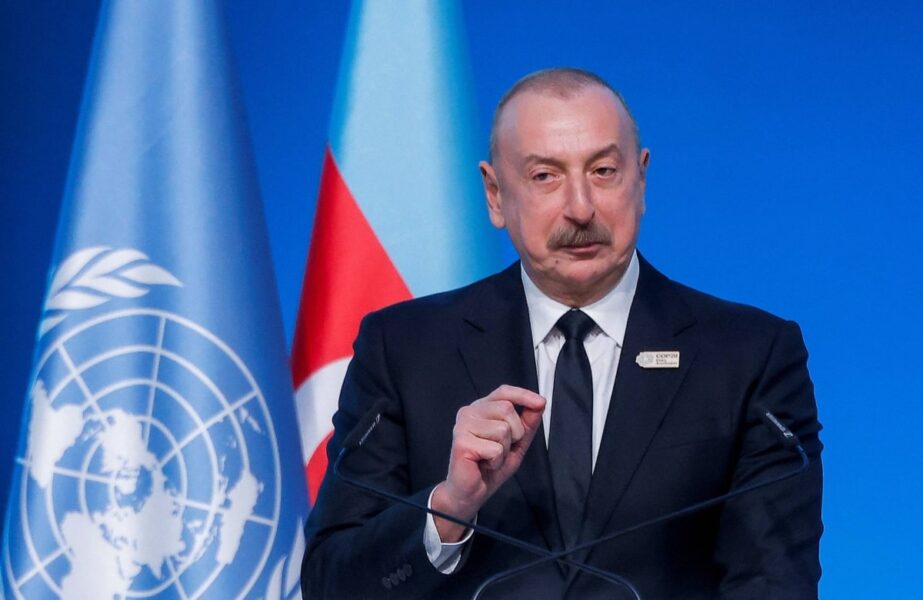Several key Western European countries including the UK, Switzerland, Germany, France and the Netherlands have slashed their aid budgets considerably in the last few months.
This trend comes amid escalating geopolitical tensions and global economic uncertainty, as countries choose to focus more on their own needs, such as increasing defence spending and domestic government stimulus measures.
Foreign aid is mainly measured through Official Development Assistance (ODA), which wealthier nations offer developing countries. The Organisation of Economic Cooperation and Development recommends that donor nations try to allocate at least 0.7 per cent of their Gross National Income (GNI) to foreign aid.
Belgium has revealed that it will be cutting its aid funding by 25 per cent over five years, while the Netherlands has reduced it by 30 per cent and France by 37 per cent.
These budget trims could have potentially devastating consequences for vulnerable countries which rely heavily on foreign financial aid, such as Tanzania, Bangladesh and Zambia.
The aid cuts could also derail the climate finance goals developed countries pledged to meet at COP29 back in November 2024.
Why are so many European countries cutting aid budgets?
Political changes, such as far right parties coming into power in Finland and Sweden, have heavily influenced aid cuts. European conflicts such as the Russia-Ukraine war and the threat of an escalating trade war with the US have also led to nations prioritising defence spending over aid money.
The UK’s prime minister Keir Starmer announced in February that aid levels would be slashed from the current 0.5 per cent of GNI to a historically low 0.3 per cent of GNI by 2027.
The country has been systematically reducing aid funding in the last few years, due to a lagging post-Brexit economy and the economic impact of the pandemic. Defence spending will be hiked to 2.5 per cent of GDP from April 2027.
Similarly, France has been shaving aid financing while dealing with a record deficit and ongoing political turmoil. The government has also been facing far-right allegations that development aid is wasting taxpayer money.
The Netherlands has also made aid cuts in order to focus more on national interests, and will integrate development aid more closely with Dutch trade, economic and migration policies.
This means that the country will now channel its aid money only into ventures which benefit it the most, such as food security, water management and child and maternal healthcare.
Finland has adopted a similar stance of providing aid to only those causes which benefit Finnish interests the most, whereas Sweden is focusing more on defence, policing and welfare services.
But experts have pointed out the dangers of losing sight of the systemic, global nature of climate change, in favour of domestic issues.
“Climate-induced disasters don’t respect borders,” says Carsten Brinkschulte, CEO and founder of Dryad Networks, a tech company that tackles wildfires.
“Cutting aid, particularly funding that supports climate adaptation and resilience, is not just short-sighted but also economically unsound. Preventative investment in vulnerable regions is significantly cheaper than managing the fallout of unmanaged climate risk,” he says.
What does this mean for climate finance goals set at COP29?
At COP29, developed countries agreed to provide at least $300 billion (€277.8bn) in climate finance yearly to developing countries by 2035. This is triple the previous $100bn (€92.6bn) target, with an overall goal of at least $1.3 trillion (€1.2tn) raised by 2035.
However, the recent European aid cuts might make it much harder for Western and Northern European countries to meet this ambitious target.
In theory, developed countries are supposed to maintain separate budgets for development aid and climate finance. This means that climate finance should be provided on top of, and not instead of, normal development aid.
Some things contributing to the difficulty of maintaining separate budgets include an overlap in goals, such as several development projects also having climate benefits. Limited resources and a lack of definitions also add to this issue.
Some countries using one fund for both tend to earmark money for climate projects and broader development goals, to create some distinction.
Many countries also meet their climate finance goals by re-labelling existing development aid as climate finance, instead of providing new funds like they should. In 2022, $27bn (€25.1bn) of the $94.2bn (€87.4bn) annual hike in public climate funds was procured from existing development aid.
New Zealand and Luxembourg are among the few developed countries which clearly separate climate finance and development aid.



